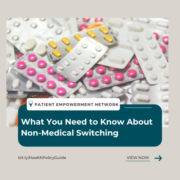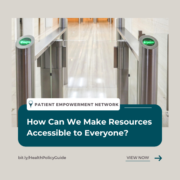What You Need to Know About Non-Medical Switching
Six in ten adults in the US have a chronic disease. Chronic disease is defined as heart disease, cancer, chronic lung disease, stroke, Alzheimer’s disease, diabetes, chronic kidney disease reports CDC.gov . With so many people having to manage chronic disease, the key is finding the right doctor. Finding the right doctor is very personal, several factors play a role in this decision including communication style, personality, availability, and of course competence. The journey is not over once a good physician is found. The patient and physician spend a lot of time and effort finding the proper medications to treat or manage the symptoms of chronic disease. For many conditions such as hypertension and diabetes, it can take trying several different medications to get the best result for the patient.
Now imagine after many months or even years, the patient and doctor have found the correct medication regimen. The patient has improved their quality of life and eased the fears that come with chronic illness. Along comes the patient’s insurance company, telling the patient that their medications are no longer covered by their plan. Now the patient and doctor must start over to find new medications that may not be as effective not because their medicines are not working but because of cost. The insurance company has put themselves in the middle of the patient-physician relationship, this is an example of non-medical switching. Non-medical switching of medication, whereby a patient’s treatment regimen is changed for reasons other than efficacy, side effect, or adherence, is often aimed at reducing drug costs reports ncbi.nlm.nih.gov .
Insurance company policies, like step therapy and non-medical drug switching, that prioritize cost-curbing over patient needs and a physician’s medical judgement can seriously compromise patient safety reports acponline.org. Insurance companies can use several of these cost cutting tactics on the patient. The first and most obvious method is when the medication regimen that the patient has been on is suddenly no longer covered under the patient’s formulary. Insurance companies can also decide to increase the patient’s copay, making the medication too expensive for the patient to afford. Most commonly, insurers use therapy tiers or step therapy to define what the out-of-pocket copay is for medication. Tier one is where the plans usually begin, and this covers generic medication and has the least out of pocket for the insured. Each tier goes up in cost related to brand name drugs and if they have generics available. The most expensive tier to the insured is specialty drugs for serious illness. Step therapy is often called fail first therapy. These policies restrict coverage of expensive therapies unless patients have already failed treatment with a lower-cost alternative reports healthaffairs.org .
Although formulary restrictions may decrease drug costs, several studies have demonstrated that total healthcare costs remained the same or increased reports pharmacytimes.com . Changes to longstanding drug regimens for patients require more doctors appointments and lab testing to get the disease symptoms stabilized again. Often, the patient needs to use the services of an emergency room and a hospitalization to get symptoms under control. The newly prescribed medications forced upon the patient and doctor can have new side effects and medical complications. Generic medications are pushed upon the patient by the insurance companies and often doctors are offered incentives to prescribe those medications. The problem is that not all generic drugs are made equal. Some can be more or less potent than the medicine they’re mimicking, release doses into the bloodstream incorrectly, or contain impurities- sometimes to dangerous effect reports pharmaceutical-technology.com .
Chronic illness is by definition long-lasting and should be managed by the patient and doctor. When insurance companies cross that boundary and insert themselves into the middle of that relationship, there are steps the patient can take to protect themselves. It is important to find a doctor that is always easily accessible to communicate with. A doctor’s office with an after-hours line and a patient portal available make it easier to communicate prescription and insurance issues as they arise. A patient can reach out to state law makers for help in instituting legislation to regulate insurance companies. Legislation needs to be in place to protect the patient and guarantee that medications can be prescribed by their doctor for ongoing conditions. The medications need continued coverage if the patient has been on them during the previous and current year. Patients can reach out to advocacy groups to seek information on what legislation is enacted in their state. Let my Doctors Decide is a national partnership of leaders across health care working in support of a simple goal; treatment decisions should be made by patients and trusted health care professionals, not insurance companies or pharmacy benefit mangers reports letmydoctorsdecide.org . Finally, the patient’s insurance companies have an appeals process in place for patients whose medications are no longer covered.
See More from the Health Policy Activity Guide
References:
https://www.keepmyrx.org/issues/non-medical-switching/
Dana Kaiser is a professional writer and a strong patient advocate, learning from experience during her 22-year career as a nurse.










